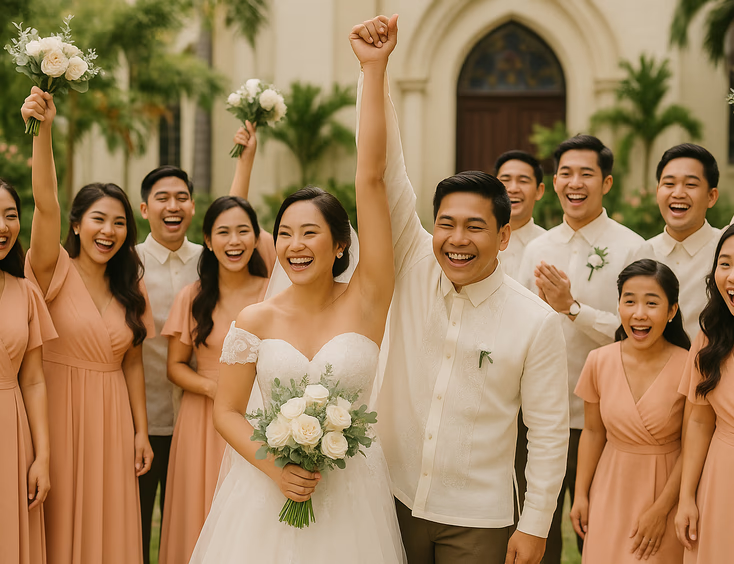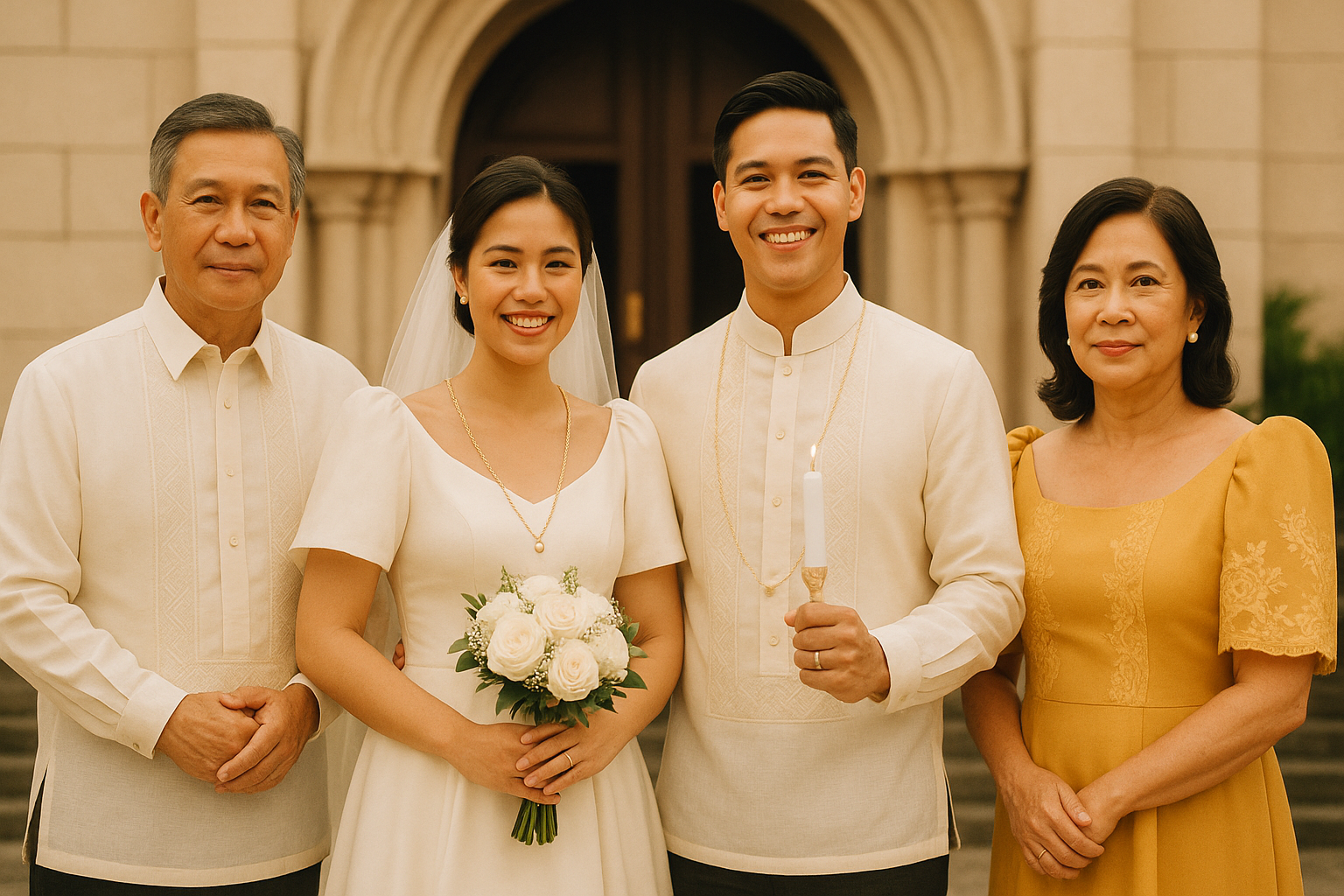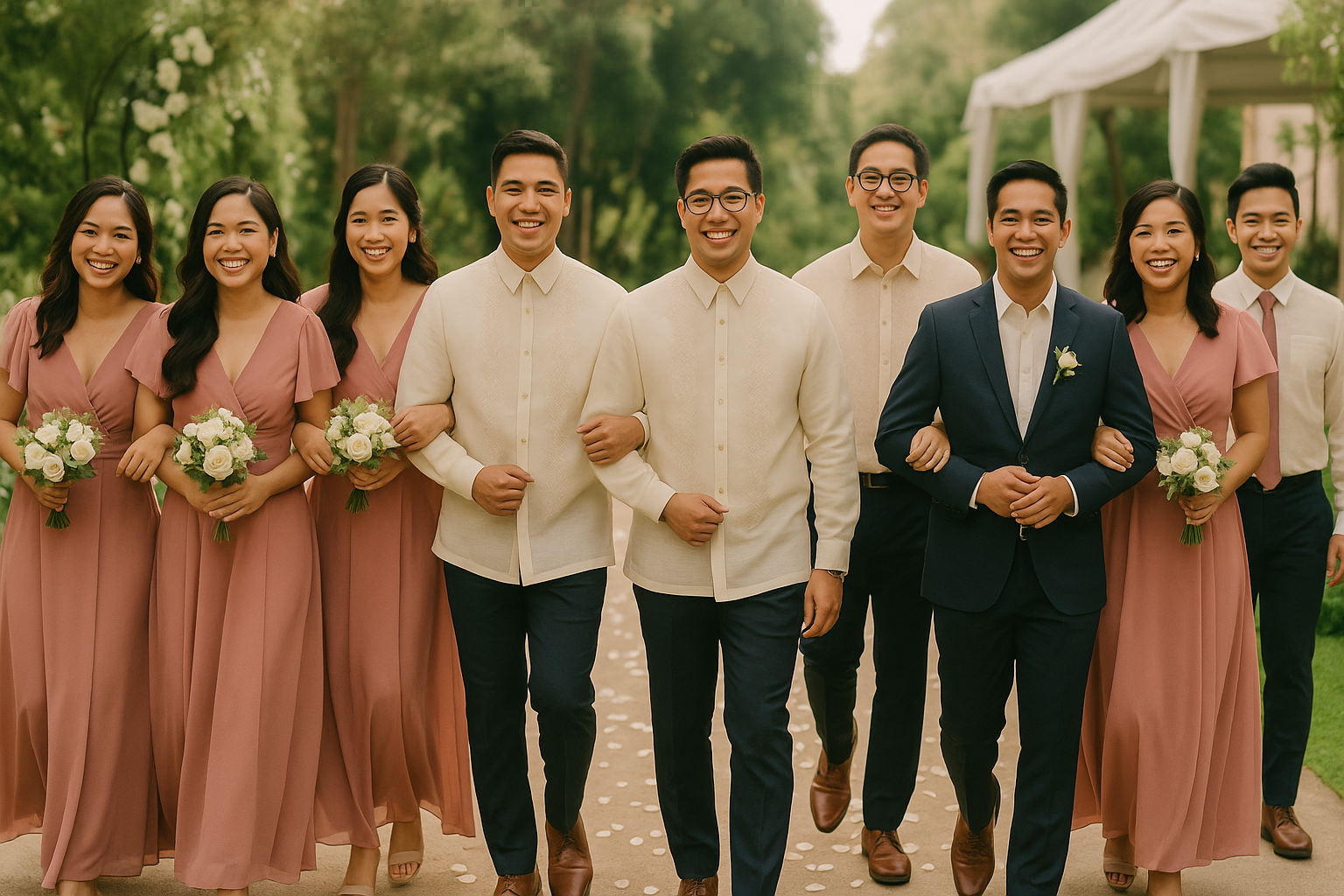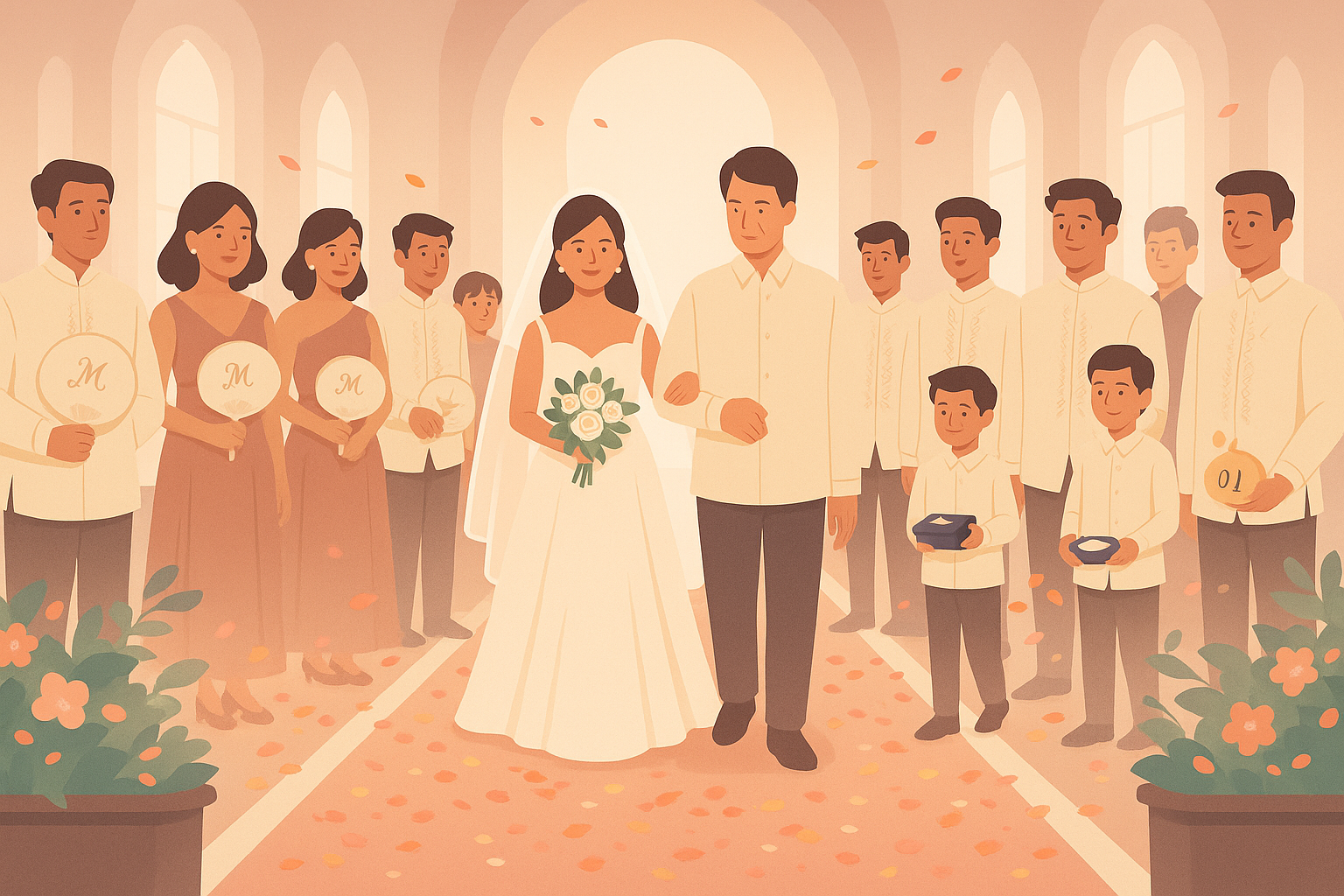
Entourage for a Traditional Pinoy Wedding: Complete Roles and Guide

A traditional Filipino wedding is a vibrant celebration deeply rooted in family, faith, and rich cultural traditions. One of its most cherished aspects is the “entourage”—a group of close relatives and friends who stand beside the bride and groom as they start their new life together. If you're preparing for a Pinoy wedding, understanding the roles and significance of each member of the entourage is essential to honoring this beautiful heritage.
In this guide, we'll break down the structure of a typical Filipino wedding entourage, explain each role's importance, and offer insights into how they contribute to the ceremony's success. Whether you're a couple planning your wedding, or someone honored to be included, this guide will help you appreciate and prepare for every meaningful part.
What is a Wedding Entourage?
In Filipino culture, the wedding entourage isn't just for show—it symbolizes the support system that surrounds the newlyweds. The entourage is made up of family members, close friends, and chosen loved ones who play vital parts throughout the wedding ceremony and festivities.
The size and composition of the entourage can vary depending on the couple's preferences, but it usually includes principal sponsors (ninongs and ninangs), secondary sponsors, bridesmaids, groomsmen, and various other attendants. Each role is steeped in tradition and responsibility, making the entourage a living symbol of unity and community.
Who Makes Up a Filipino Wedding Entourage?

1. Principal Sponsors (Ninongs and Ninangs)
The Role:
Principal sponsors, affectionately called “Ninong” and “Ninang,” are among the most respected figures in a Filipino wedding. These are esteemed elders or family friends chosen for their wisdom, moral standing, and significant influence in the couple's lives. Their primary role is to witness the marriage and offer lifelong guidance to the couple.
Duties:
- Sign the marriage certificate as official witnesses
- Serve as godparents to the couple, providing advice and support throughout their married life
- Sometimes, principal sponsors are also asked to offer prayers or words of wisdom during the reception
How Many?
Traditionally, at least one pair is required (one Ninong and one Ninang), but most Filipino weddings include three to five pairs.
2. Secondary Sponsors
The Role:
Secondary sponsors are often younger relatives or close friends who participate in important rituals during the wedding Mass or ceremony. They are typically assigned to specific tasks that symbolize various aspects of marriage.
Key Tasks and Their Meanings:
- Candle Sponsors:
Two people, usually a male and a female, who light candles on either side of the bride and groom. The light represents Christ's presence and guidance in the couple's life. - Veil Sponsors:
A pair who drapes a white veil over the bride and groom's shoulders, symbolizing their unity and protection under God. - Cord Sponsors:
A pair who places a decorative cord (yugal) over the couple's shoulders in a figure-eight shape, representing everlasting fidelity and the binding nature of marriage.
How Many?
One pair each for candles, veil, and cord—totaling six secondary sponsors.
3. Best Man and Maid/Matron of Honor
Best Man:
Often the groom's closest male friend or brother, the Best Man is entrusted with significant duties, including safeguarding the wedding rings, organizing the groom's party, and delivering a toast at the reception.
Maid or Matron of Honor:
The bride's right hand, this role is given to her closest friend or sister. She helps the bride with preparations, ensures her comfort during the day, manages the bridesmaids, and often organizes pre-wedding events like the bridal shower. (A “Maid” of Honor is unmarried; a “Matron” is married.)

4. Bridesmaids and Groomsmen
Bridesmaids:
These are the bride's closest friends or relatives who support her throughout the wedding journey, assist with pre-wedding events, and participate in the procession. They usually help calm nerves and lend emotional support.
Groomsmen:
Similar to bridesmaids, the groomsmen are the groom's closest allies. They help with planning, ushering guests, and standing by the groom's side.
The number of bridesmaids and groomsmen varies by preference, but is typically three to eight pairs.
5. Flower Girls, Bible Bearer, and Ring Bearer
Flower Girls:
Adorable young girls (often nieces or daughters of close friends) who scatter flower petals down the aisle, symbolizing the path to a sweet and fruitful marriage.
Bible Bearer:
A young boy entrusted with carrying the family Bible—signifying the couple's intent to build their life on faith.
Ring Bearer:
A young boy who carries the wedding rings, representing innocence and the hope that the couple's love will remain pure.
6. Coin Bearer
The Role:
The coin bearer carries the “Arrhae”—a set of 13 coins that the groom presents to the bride during the ceremony. The coins represent prosperity, generosity, and the couple's pledge to share their wealth and responsibilities.
7. Other Possible Roles
Filipino weddings may include extra attendants, such as:
- Junior Bridesmaids/Groomsmen: Young teens who take part in the procession.
- Candle, Veil, or Cord Attendants: If there are additional pairs for these roles.
- Pages or Train Bearers: Young children who help carry the bride's gown train.

The Procession Order
The entourage leads the wedding procession, following a set sequence as they enter the church or ceremony venue. While order may vary, a typical sequence is:
- Principal Sponsors
- Secondary Sponsors (Candle, Veil, Cord)
- Groomsmen and Bridesmaids (walking in pairs)
- Best Man
- Maid/Matron of Honor
- Coin, Bible, and Ring Bearers
- Flower Girls
- The Bride (escorted by her father or both parents)
Why the Entourage Matters in a Pinoy Wedding
For Filipinos, the wedding entourage goes beyond formalities. It's a visible testament to the couple's community—showing that their marriage is blessed by loved ones who will support them throughout life. The rituals and symbols performed by the entourage are meant to invoke blessings, guidance, and protection for the newlyweds.
Being chosen for the entourage is both an honor and a responsibility. Each member's presence enriches the ceremony, making the celebration deeply personal and meaningful.
Tips for Choosing Your Entourage
- Choose People You Trust: Select family and friends who genuinely care about you and your partner, and who will stand by your side beyond the wedding day.
- Consider Each Role's Requirements: Think about your chosen members' ages, personalities, and availability for rehearsals and events.
- Communicate Clearly: Make sure each member understands their role and responsibilities well in advance.
- Honor Traditions, but Make It Your Own: While tradition is important, feel free to add personal touches that reflect your unique relationship and values.
Conclusion
A traditional Pinoy wedding entourage is more than a decorative lineup—it's a living tapestry of love, support, and faith. Each role carries generations of meaning and is a vital part of a Filipino couple's journey together. By thoughtfully choosing your entourage and embracing these cherished traditions, your wedding will become a celebration that's both uniquely yours and deeply rooted in Filipino culture.





